CALM BEFORE THE STORM: 1914 - 1937
Vaglieri was succeeded by Angelo Pasqui, who was director for only one year. The next director, from 1914 to 1924, was Roberto Paribeni. In 1917 a large part of the ancient city that was owned by the Aldobrandini family was acquired through expropriation. The family still owns part of the city, in the north-east, with the chapel San Sebastiano. The main excavator in these years was Guido Calza, still working with Finelli and Gismondi. He became director in 1924.
After the death of Vaglieri more ruins were slowly unearthed, more or less according to the standards set by Vaglieri: block I,IV, the House of Diana (I,III,3-4), the House of the Millstones (I,III,1), and the Great Warehouse (II,IX,7). Soon however these standards were given up. Out of the blue the Baths of the Forum (I,XII,6) emerged, without a single report. Once again the excavators were not interested in stratigraphy and the place of discovery of objects. They talked of "archaeology of the spade and the pickaxe".
Calza's most thorough excavations were those of a necropolis on the Isola Sacra, the artificial island between Ostia and Portus. The first excavations here had been carried out in 1699 by Emmanuel-Théodose de La Tour d'Auvergne, Cardinal of Bouillon, Cardinal-Bishop of Porto and Santa Rufina. He had found an exceptionally large tomb of the gens Caesennia. The inscriptions were taken to a palace of the Cardinal on Piazza di San Marco in Rome, where they were copied by the Benedictine monk Bernard de Montfaucon. They then disappeared. Further excavations had been conducted by Pietro Paolo Amici around 1744, the Guglielmi brothers from Civitavecchia in 1839, and then by Edoardo Gatti in 1910-11. The results of Calza's excavations were spectacular and attracted a lot of attention. Several newsreels were made by the Istituto Luce (see the section The oldest movies of Ostia). In 1940 Calza published a book about the excavations, La Necropoli del Porto di Roma nell'Isola Sacra. Portus itself still received little attention, in spite of the book Il Porto di Roma imperiale e l'Agro Portuense by Giuseppe Lugli and Goffredo Filibeck, published in 1935.
Calza showed a great interest in reconstructions and restoration. The museum of Ostia, planned and prepared in the 19th century, was inaugurated in 1934, in the presence of Mussolini. The developments between the two World Wars must be understood against the background of the rise of fascism in Italy. Rome and Italy were seen as successors of a glorious ancient Rome.
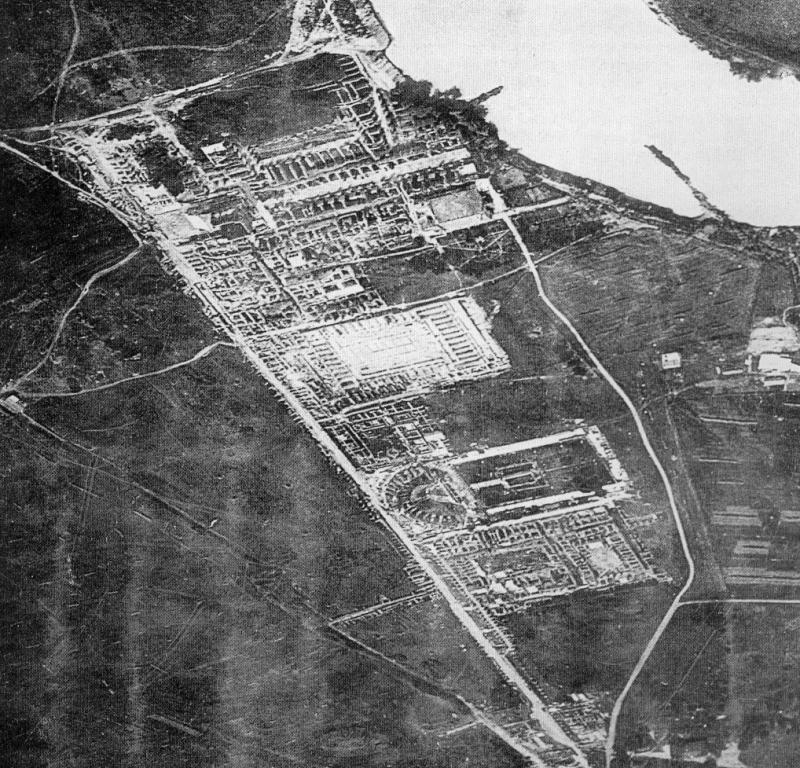
The ruins as they appeared after the First World War.
Photo taken from a balloon, from the south-east. Olivanti 2001, fig. 3.
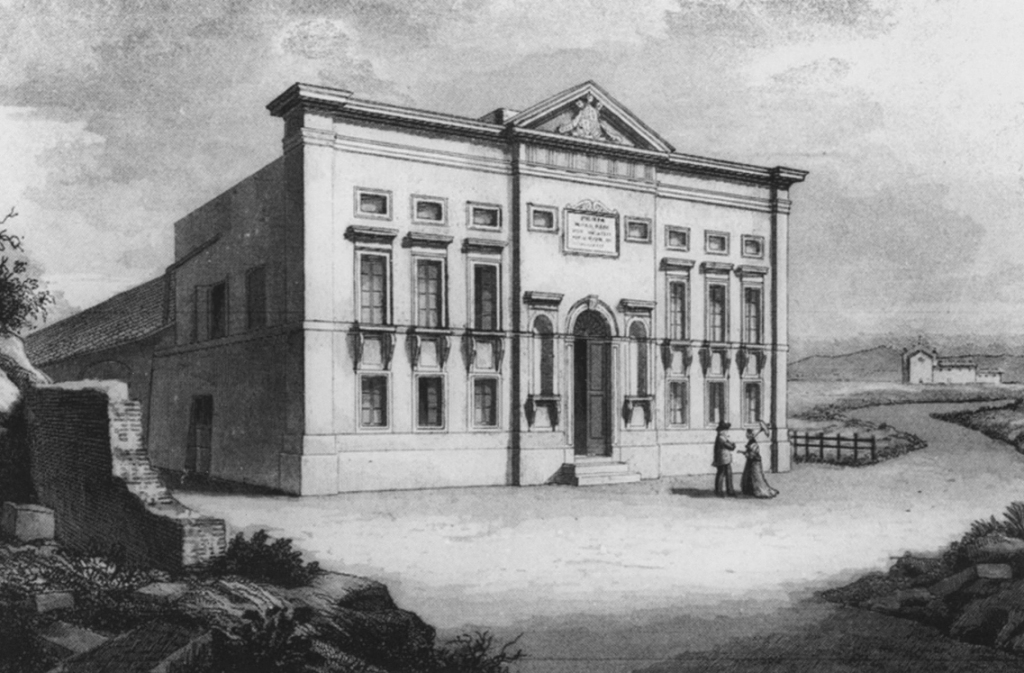
The museum (the rebuilt Casone del Sale) in a depiction from 1874. Angelucci 2006, fig. 7.
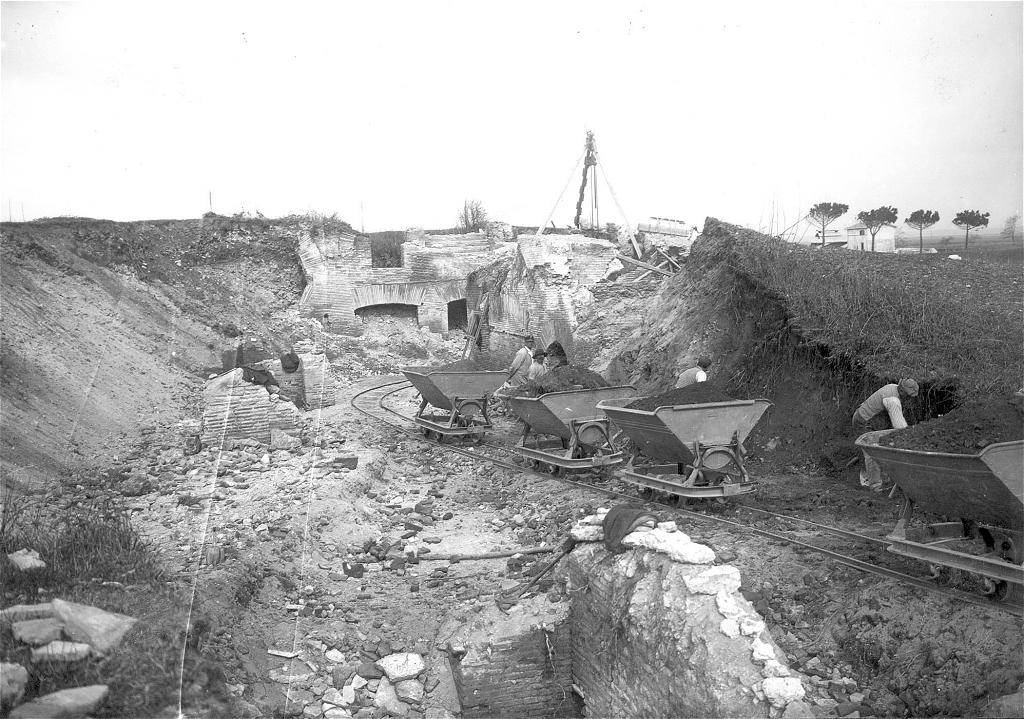
The excavations of the Square of the Lares in 1916. Photo: Archivio Fotografico Ostia, neg. B 2162.
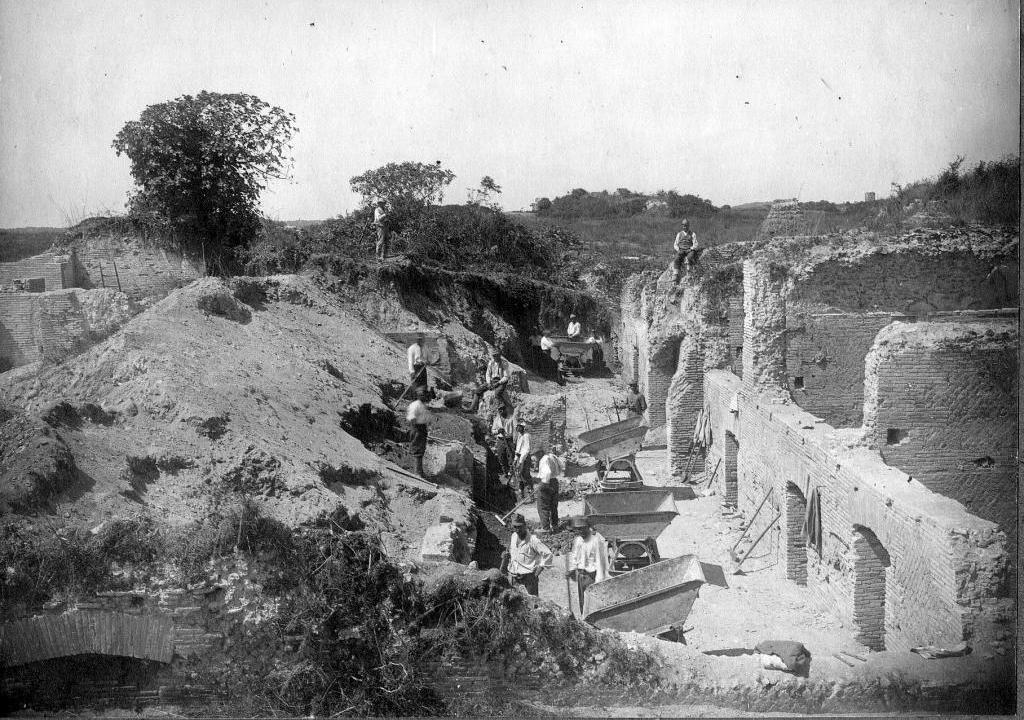
The excavations of the House behind the Curia (I,IX,1) in the early 1920's. Photo: Archivio Fotografico Ostia, neg. B 2257.
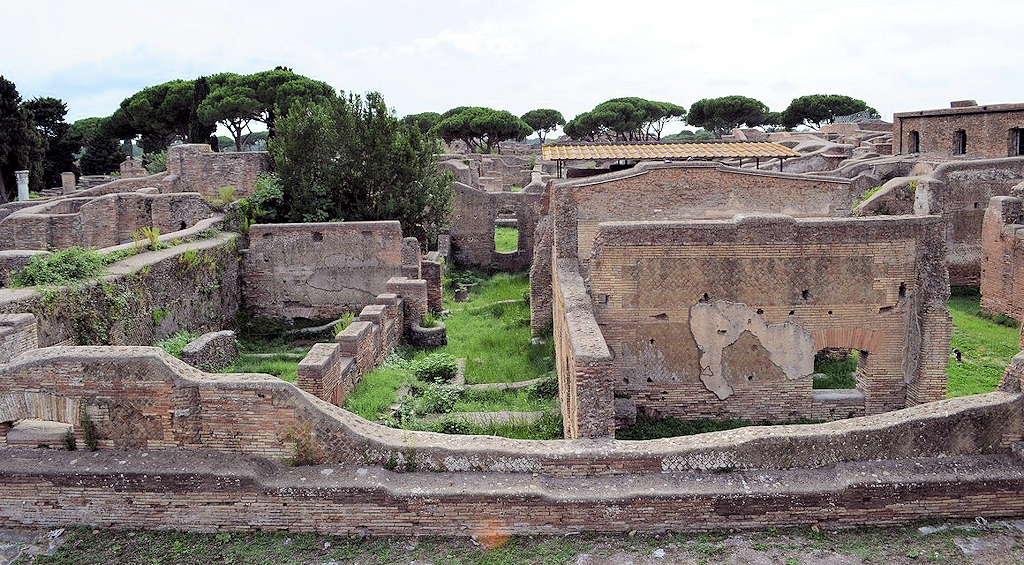
The building as it appears today. The large hole at the end of the central corridor is part of a tunnel, made by people in search for marble. Photo: Raffaella.
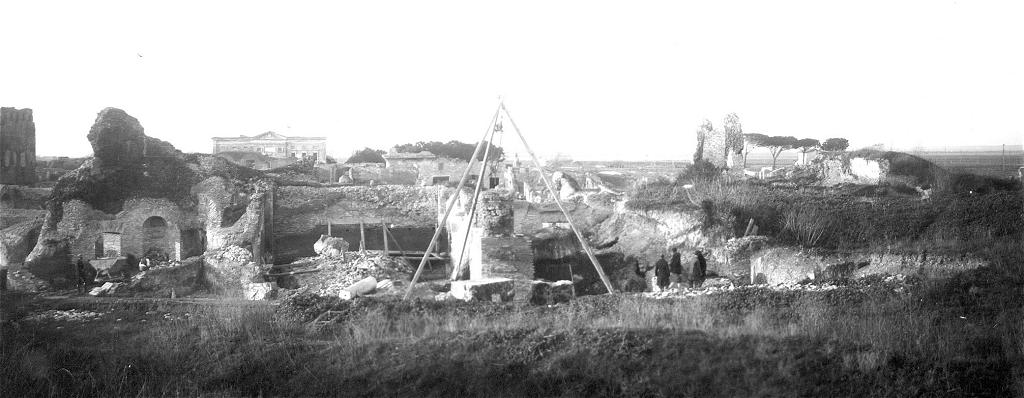
The excavations of the Baths of the Forum in the 1930's. In the background is the museum. Photo: Archivio Fotografico Ostia, neg. B 2377.
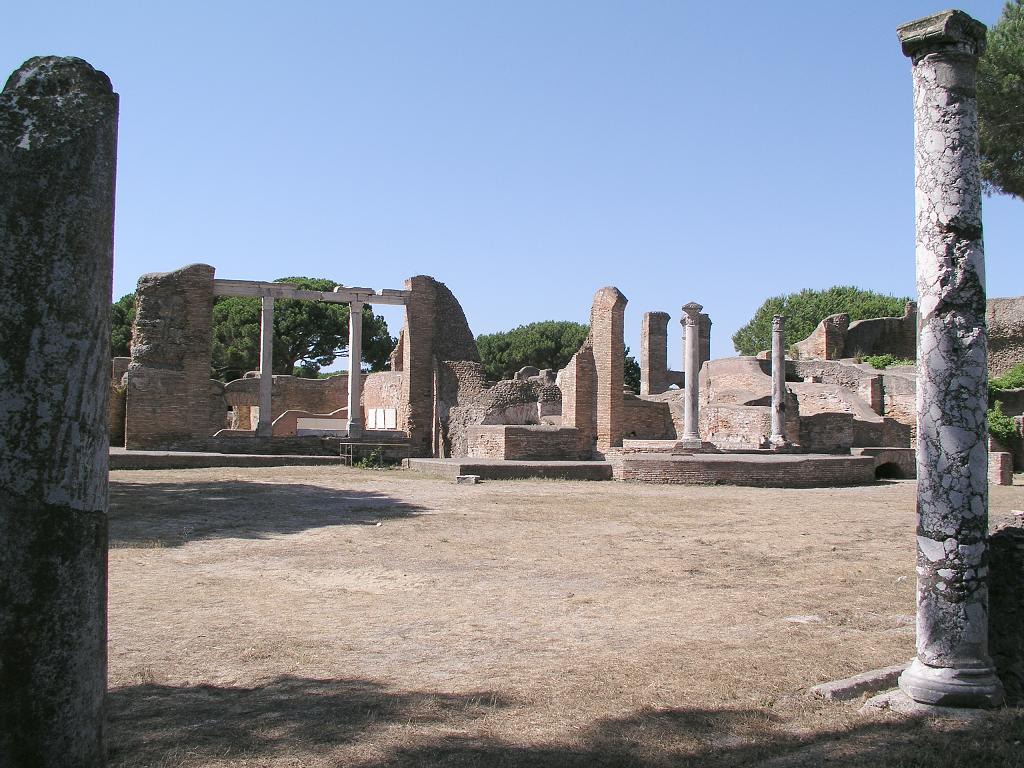
The Baths of the Forum as they appear today. Photo: Melissa Sellers.